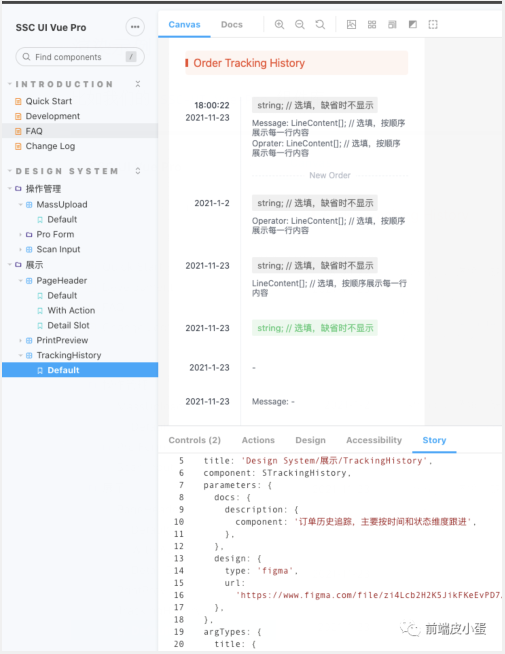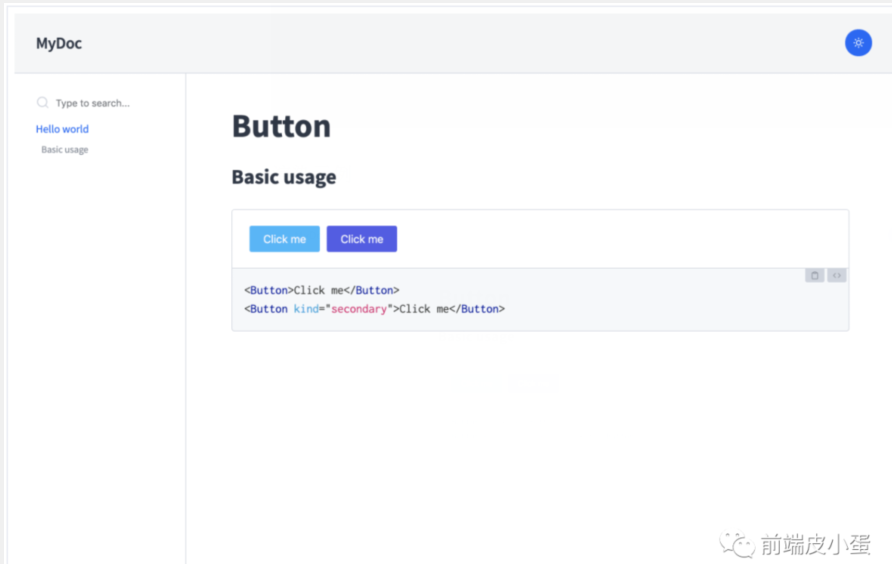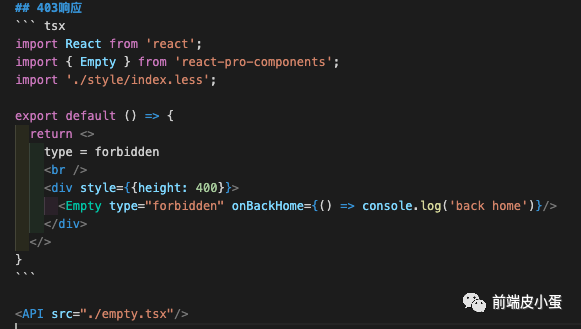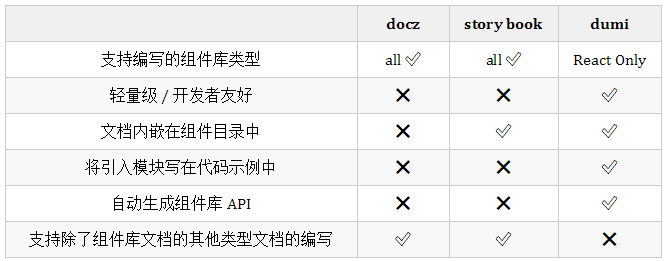對(duì)比三個(gè)強(qiáng)大的組件文檔展示工具
背景
前段時(shí)間, 部門在熱火朝天的搞各類組件庫(kù)。
做組件庫(kù),不可避免的就需要做組件的展示和說(shuō)明, 要用到一些文檔工具。
我們項(xiàng)目里面也嘗試了幾種不同的文檔工具,今天和大家分享一些經(jīng)驗(yàn), 希望對(duì)大家有所幫助。
正文
目前, 我們的組件庫(kù) 一共使用了三種文檔工具, 分別是:
- Story Book
- Docz
- Dumi
下面我會(huì)根據(jù)實(shí)際的使用情況,對(duì)這三種工具做一些對(duì)比 并給出一些結(jié)論。
1. Story Book
StoryBook 提供了一套UI組件的開(kāi)發(fā)環(huán)境。
它允許你瀏覽組件庫(kù),查看每個(gè)組件的不同狀態(tài),以及交互式開(kāi)發(fā)和測(cè)試組件, 目前支持 react、vue、angular 等前端類庫(kù)和框架。
代碼示例
- // Button.stories.tsx
- import React from 'react';
- import { Story } from '@storybook/react';
- // We create a “template” of how args map to rendering
- const Template: Story<ButtonProps> = (args) => <Button {...args} />;
- export const Primary = Template.bind({});
- Primary.args = {
- primary: true,
- label: 'Primary',
- };
storybook 提供可以交互的組件編寫(xiě),通過(guò) Template.bind({}) 進(jìn)行組件的綁定,通過(guò) args暴露可交互的屬性。
且支持的組件庫(kù)豐富,但是文檔的編寫(xiě)除了需要提供示例外,還需要兼容可交互的模式。
渲染示例
比如我們的 SSC-UI-Vue-Pro 組件庫(kù):
- import STrackingHistory from './tracking-history.vue';
- import './style/index.less';
- export default {
- title: 'Design System/展示/TrackingHistory',
- component: STrackingHistory,
- parameters: {
- docs: {
- description: {
- component: '訂單歷史追蹤,主要按時(shí)間和狀態(tài)維度跟進(jìn)',
- },
- },
- design: {
- type: 'figma',
- url:
- 'https://www.figma.com/file/zi4Lcb2H2K5JikFKeEvPD7/WMS%E5%85%B8%E5%9E%8B%E6%A8%A1%E6%9D%BFV1.1?node-id=2974%3A595',
- },
- },
- argTypes: {
- title: {
- control: 'text',
- description: '標(biāo)題內(nèi)容,必填',
- type: { required: true },
- },
- list: {
- control: 'object',
- description: '歷史記錄列表',
- type: { required: true, summary: 'array' },
- },
- },
- };
- const Template = (args, { argTypes }) => ({
- components: { STrackingHistory },
- props: Object.keys(argTypes),
- template: '<STrackingHistory v-bind="$props" />',
- });
- export const Default = Template.bind({});
- (Default as any).args = {
- title: 'Order Tracking History',
- list: [
- {
- time: '18:00:22',
- date: '2021-11-23',
- status: 'string; // 選填,缺省時(shí)不顯示',
- statusType: 'default',
- contents: [
- {
- label: 'Message',
- value: 'LineContent[]; // 選填,按順序展示每一行內(nèi)容',
- },
- {
- label: 'Oprater',
- value: 'LineContent[]; // 選填,按順序展示每一行內(nèi)容',
- },
- ],
- splitLineText: 'New Order',
- },
- {
- date: '2021-1-2',
- status: 'string; // 選填,缺省時(shí)不顯示',
- statusType: 'default',
- contents: [
- {
- label: 'Operator',
- value: 'LineContent[]; // 選填,按順序展示每一行內(nèi)容',
- },
- ],
- },
- {
- date: '2021-11-23',
- status: 'string; // 選填,缺省時(shí)不顯示',
- contents: [
- {
- value: 'LineContent[]; // 選填,按順序展示每一行內(nèi)容',
- },
- ],
- },
- {
- date: '2021-11-23',
- status: 'string; // 選填,缺省時(shí)不顯示',
- statusType: 'success',
- contents: [],
- },
- {
- date: '2021-1-23',
- contents: [{}],
- },
- {
- date: '2021-1-3',
- },
- {
- date: '2021-11-23',
- contents: [
- {
- label: 'Message',
- },
- ],
- },
- ],
- };
2. docz
Docz 是一個(gè)高效、零配置的事件記錄工具。
Docz 基于 MDX ,有許多內(nèi)置的組件可以幫助你記錄你的事情。
它同時(shí)支持添加插件,以便于通過(guò) Docz 流程和數(shù)據(jù)管控很多事情。
代碼示例
- // Button.mdx
- import { Playground } from 'docz'
- import { Button } from './Button'
- # Button
- ## Basic usage
- <Playground>
- <Button>Click me</Button>
- <Button kind="secondary">Click me</Button>
- </Playground>
渲染示例
這是官網(wǎng)的一個(gè)示例,可以看出代碼的示例需要寫(xiě)在 Playground 標(biāo)簽里面,由此帶來(lái)一個(gè)問(wèn)題,無(wú)法在代碼示例中寫(xiě)引入模塊,這其實(shí)對(duì)開(kāi)發(fā)者不太友好。
我們的 SSC-UI-React 組件庫(kù)使用了docz, 實(shí)際效果:
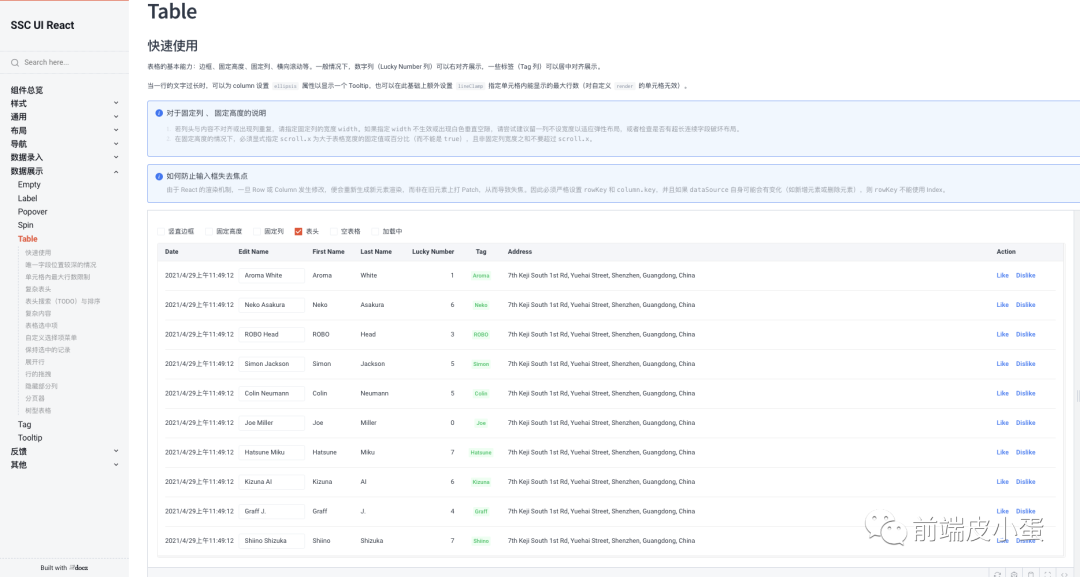
3. dumi
dumi 是一款為組件開(kāi)發(fā)場(chǎng)景而生的文檔工具。
其具有開(kāi)箱即用,將注意力集中在組件開(kāi)發(fā)和文檔編寫(xiě)上。
基于 TypeScript 類型定義,自動(dòng)生成組件 API、移動(dòng)端組件庫(kù)編寫(xiě)及多語(yǔ)言支持。
代碼示例
在類型定義中:
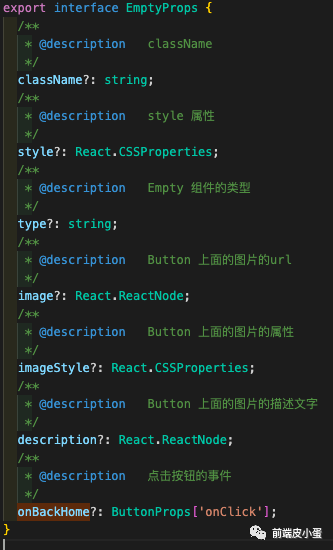
渲染示例
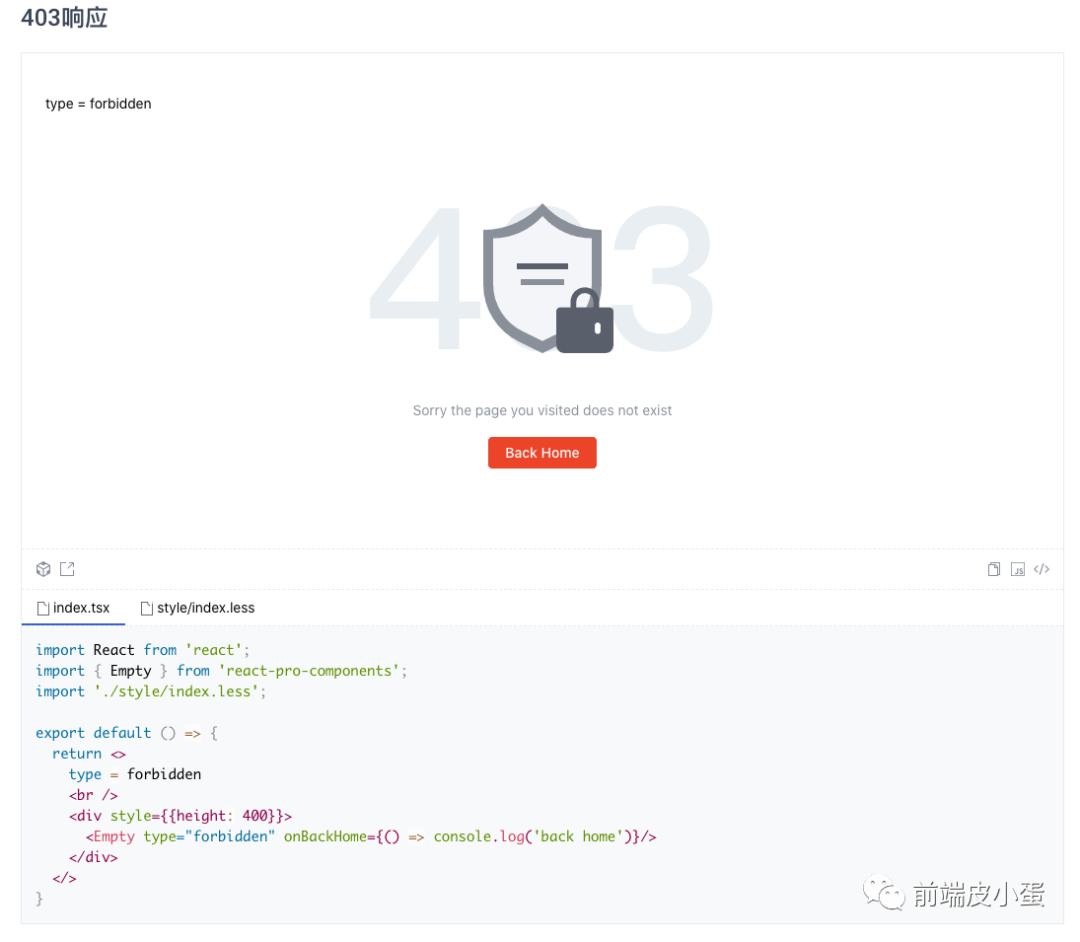

總體對(duì)比
以下為三個(gè)庫(kù)的特性對(duì)比:
綜上所述,愉快地決定將 React Pro Components 組件庫(kù)文檔遷移到 dumi 中。
踩坑總結(jié)
1. React 版本不兼容問(wèn)題
一通遷移操作后,我們 yarn 了一下,發(fā)現(xiàn)報(bào)錯(cuò)了:

這是 ts 報(bào)出的關(guān)于 react 類型檢查的錯(cuò)誤,一開(kāi)始認(rèn)為是 ts 檢查多了,那么在tsconfig.json 配置 excluded:['node-modules'],將這個(gè)檢查去掉,但是配完了仍然不好使。
經(jīng)過(guò)一通細(xì)致的檢查,在 yarn.lock 中發(fā)現(xiàn)組件庫(kù)依賴的 react 版本是 16,而 dumi 依賴的 react 版本是*,*的版本下載了 17 版本的 react,由于兩個(gè)版本的 react 的 ts 類型不同,導(dǎo)致了類型檢查不通過(guò)。


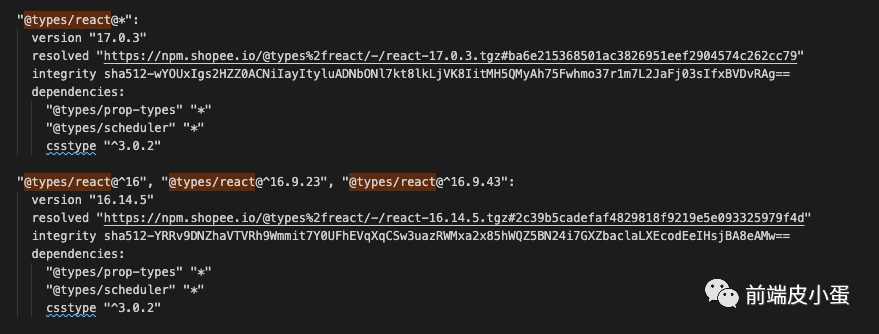
既然如此,我們只要顯示指定 react 的版本為 16 就行了,16 在 * 的范圍,也不會(huì)導(dǎo)致 dumi 有錯(cuò)誤。
在 package.json 中加入:
- "resolutions": {
- "@types/react": "^16.9.23"
- }
即可。
2.文檔引用問(wèn)題
由于 dumi 的文檔是面向用戶的,因此寫(xiě)文檔時(shí)引入組件的方法,舉例:
如 Button 組件為:
- import { EditArea } from 'react-pro-components'
由于這里引入的是 node_module 的包,這使得組件庫(kù)的更改無(wú)法映射到文檔中,需要添加別名映射。
在 .umirc.ts 中添加:
- const path = require('path');
- const chainWebpack = require('webpack-chain');
- export default {
- // 其他配置
- chainWebpack(memo) {
- // 設(shè)置 alias
- memo.resolve
- .alias
- .set('react-pro-components', path.resolve(__dirname, 'src', 'components'))
- },
- };
3. 其他問(wèn)題
1.dumi 是否支持 api 文檔的部分屬性隱藏呢?
暫不支持
2.dumi 是否支持搜索呢?
site 模式支持,doc 模式暫不支持。
3.dumi 是否 md 文檔單獨(dú)放在組件目錄下的一個(gè)文件夾下呢?
暫不支持,需要直接放在組件目錄下,如 Button 組件:
- ├── Button
- │ └── index.md
結(jié)論
經(jīng)多對(duì)比之后, 我們把一個(gè) React 組件庫(kù) 遷移到了 dumi, 并取得了不錯(cuò)的效果。
有需要做 React 組件庫(kù)的小伙伴可以留意下dumi.
至于 Vue 組件文檔庫(kù), 大家就根據(jù)自己的情況靈活選擇吧。
希望這篇文章能對(duì)大家有所幫助, 謝謝。
















